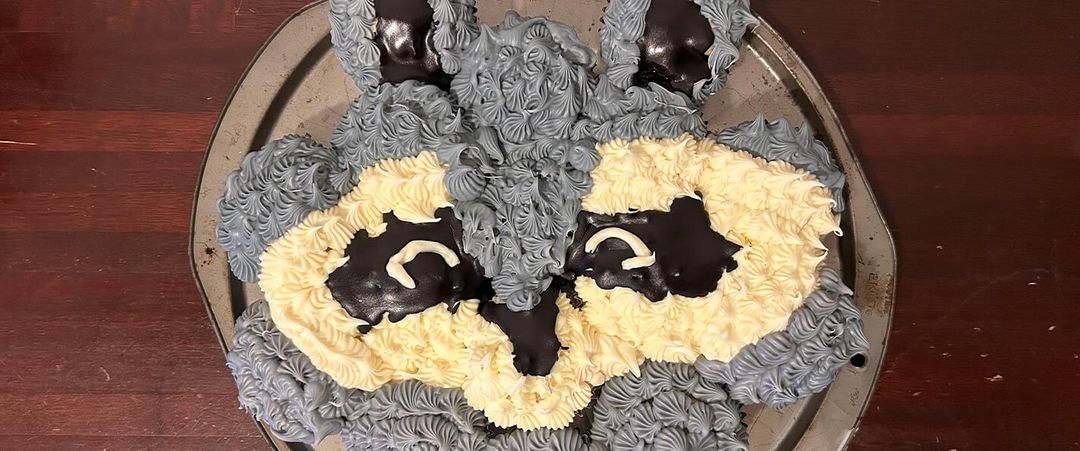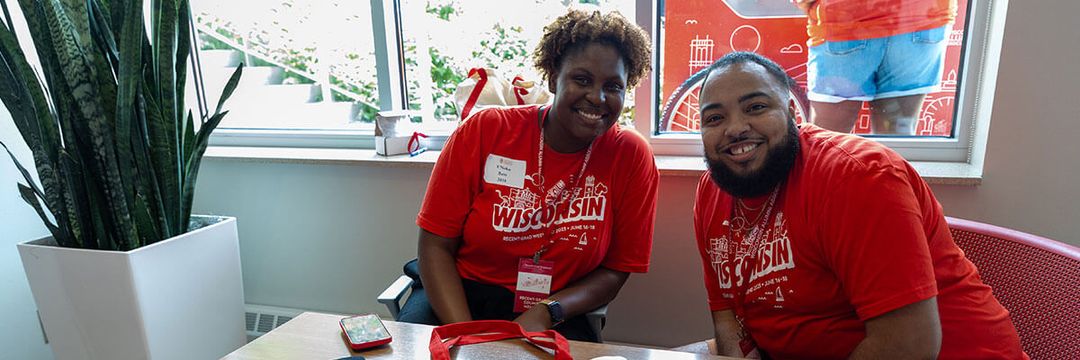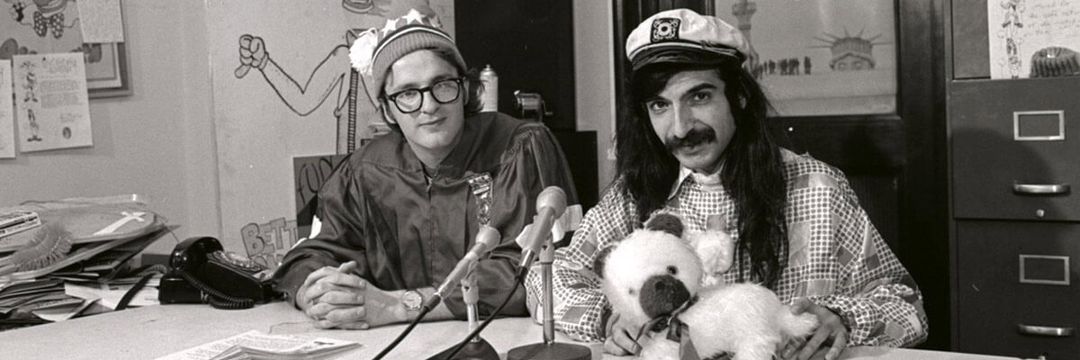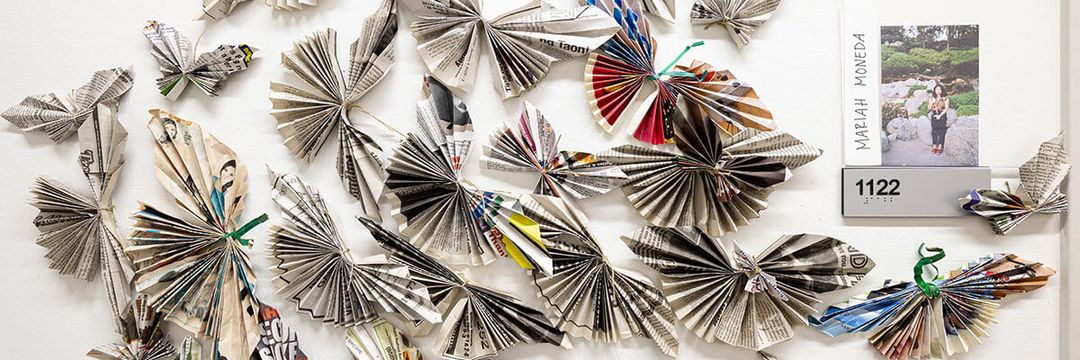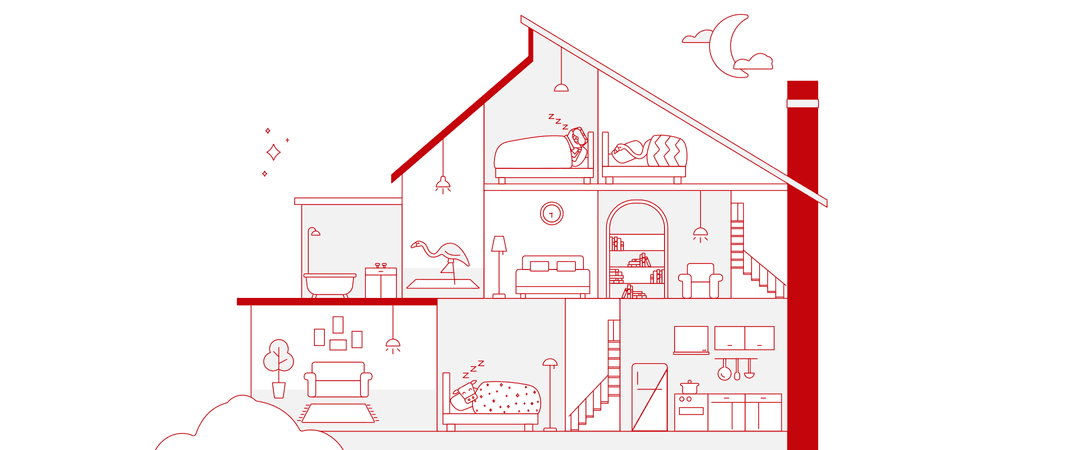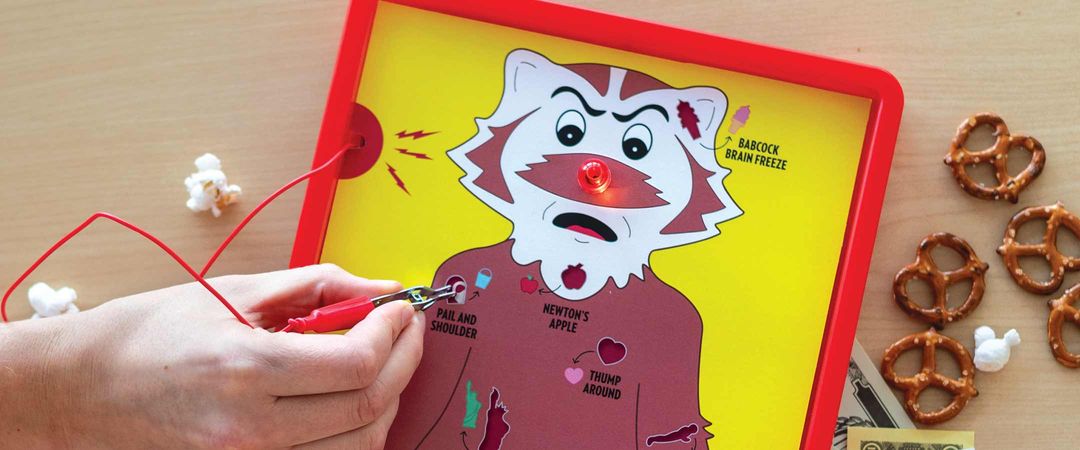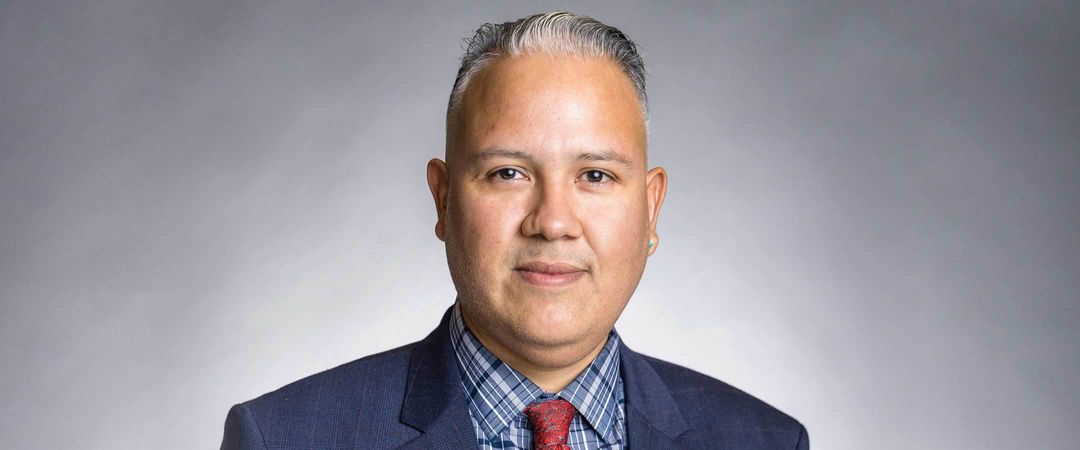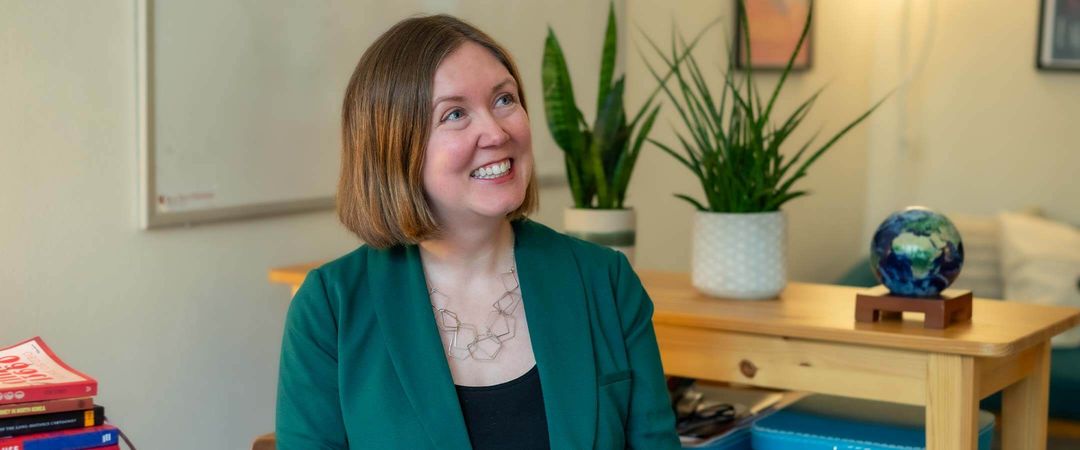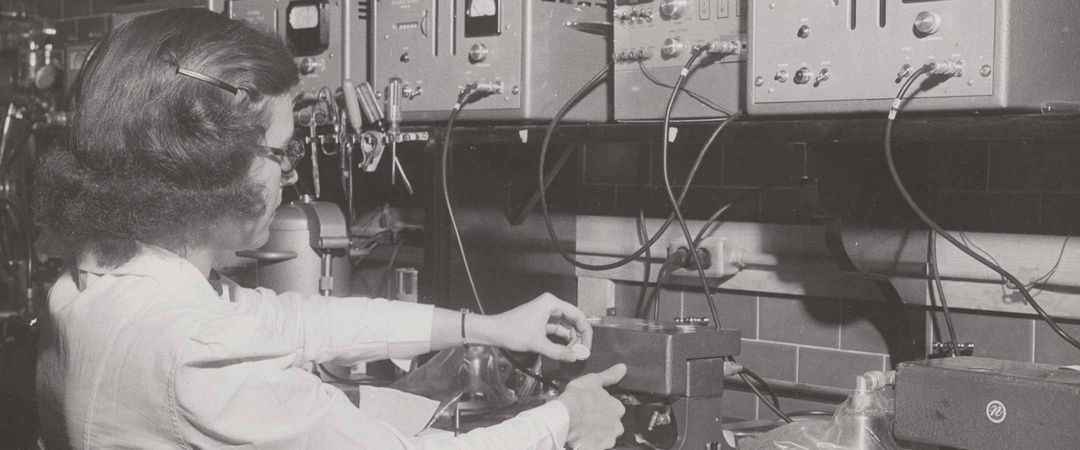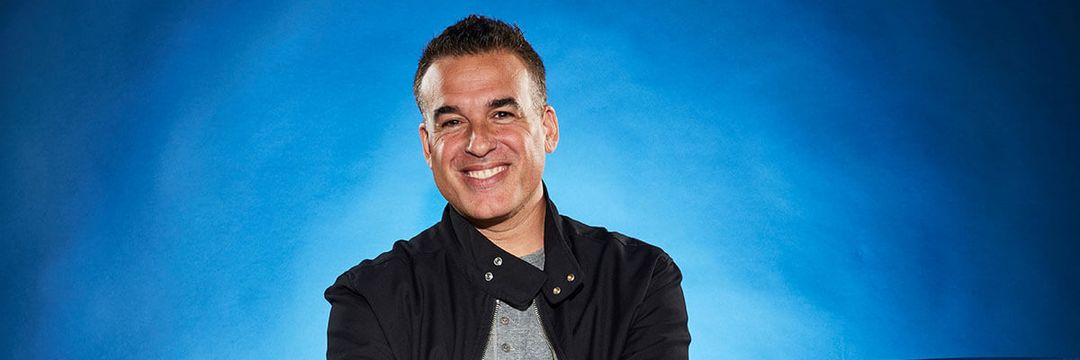Each summer, an intergenerational learning program called Grandparents University® (GPU) draws hundreds of grandparents and grandchildren to UW–Madison to participate in the Badger experience, complete with staying in a residence hall, touring campus, going to class, participating in engaging and hands-on activities in a major — and earning a GPU “degree!”
This year marks the 20th summer of GPU — yes, it’s old enough to go to college now! — and it’s poised to break records by all standards with 28 majors offered and participants set to attend across three two-day sessions. You may wonder, was GPU always this awesome? Yes, yes it was, but it used to be a lot smaller. Let’s rewind to 20 years ago …
Baby GPU Is Born!
GPU was born in 2001 from a collaboration between Bonnie Geyer ’67, MS’00, an outreach specialist at UW–Extension, and the Wisconsin Alumni Association’s (WAA) own Jeff Wendorf ’82. The two had been looking at ways to revitalize the UW–Extension’s existing grandparent program from being caretaker focused to something that would bring alumni back to UW–Madison. “Grandparents don’t have the same expectations as parents for their grandchildren,” says Wendorf. “They are more likely to let them fail, to experiment, and to just be kids.” Geyer and Wendorf knew that creating a program to foster intergenerational learning would give alumni an unforgettable experience for years to come.
First Steps
Little GPU took its first steps on July 21–22, 2001, with four majors and 150–160 attendees. Participants stayed in Sellery Hall, had a traditional Wisconsin tailgate at Camp Randall, created a book of shared stories with their grandparents, and, of course, participated in a major.
UW faculty members lead each major with help from graduate and undergraduate students. Many majors are also housed in their related building on campus, such as nursing in Signe Scott Cooper Hall and restoration ecology at the Arboretum. The original majors and instructors were: ecology, led by Tom Yuill MS’62, PhD’64; science, taught by Herb Wang ’66; history, led by Jerry Apps ’55, MS’57, PhD’67; and communication arts, by Mary Anne Fitzpatrick.
Today, GPU spans three weekends, or “sessions,” and boast 28
majors from long-time favorites like veterinary medicine to new ones, like
journalism. A few of the longest running majors include veterinary medicine,
engineering, and biotechnology — which have all been around for more than
15 years.
Favorite Child
GPU quickly demonstrated its popularity by selling out for the first time in 2003 — only the third summer of the program — and then every year after that, cementing its status as the favorite child (there’s always one). Even with virtually no marketing, GPU sells out in less than eight hours. It’s a high-pressure moment when both staff and grandparents need to be on their game.
To give you an idea, in 2016, the first two sessions sold
out in 26.09 renditions of “Varsity” — or 30 minutes in non-Badger terms — and
session three took almost eight hours to fill (or 417.39 renditions of
Varsity). This year, sessions one and two filled in about 30 minutes, with session
three close behind at 45 minutes — the fastest GPU has ever sold out.
Baby Genius
As GPU became more successful with each passing year, other universities began recognizing the opportunity the program held. Tom Zinnen PhD’85, the long-time biotechnology instructor, says, “Any university that could do GPU and doesn’t is missing a huge opportunity.”
WAA realized the demand for the program and trademarked the name in 2007. Now, more than 26 institutions use the GPU trademark to host similar programs at their own campuses. The most famous exception is Michigan State, which started hosting its GPU a few years after WAA, but doesn’t currently recognize the trademark.
Growth Spurt
As GPU found its footing and began to grow, Sarah Schutt — now WAA’s chief alumni officer — was hired in 2001 to head up the program. Schutt cared for GPU until 2009 when Kate Prehn ’09 was hired as the Grandparents University coordinator. Prehn became the much-loved face and spirit of GPU and led the program from 2009–17.
GPU outgrew its old spaces in 2006 and added a second session to meet the ever-growing demand, reaching more than 500 participants for the first time. In 2008, the program was expanded again to three consecutive sessions: session one on Thursday and Friday, session two on Monday and Tuesday, and session three on the following Thursday and Friday. Unsurprisingly, neither the staff nor grandparents were fans of this structure, so the program reverted to two sessions until 2013 when it became three Thursday-to-Friday sessions for good.
The GPU team often gets asked if the program will ever grow beyond three sessions, but the answer is “probably not.” Prehn explains, “Summer is a very busy time on our campus, and getting a good volume of instructors to teach majors gets harder with more sessions.” However, the GPU team is dedicated to bringing in new majors, fields trips, and experiences to make each GPU unforgettable.
Off to College
Teri Grein ’16, the program’s current leader, had her first GPU experience in 2013 as a student guide. Student guides, a key addition to the program, help run the day-of programs, doing everything from packing snacks and helping out in the majors to finding lost grandparents.
Like many students, Grein worked three jobs in the summer while living in her hometown of Wisconsin Rapids (“Shout-out to the Rafters!”). Every Thursday morning of GPU, she would wake up absurdly early and leave Rapids at 4 a.m. to drive to Madison. “That’s just how much I loved GPU,” she says. “It’s something truly special.”
Under Grein’s leadership, the program has continued to expand with more majors and spots for participants than ever before.
And GPU isn’t just popular with Wisconsin-based Badgers either – grandparents and grandchildren come from around the world to attend. More than 30 states and four countries were represented at GPU in 2018.
Graduation
And for the participants that come every year? Well, they love it too.
Tom Armstrong ’57 has attended GPU for more than 15 years — so long, in fact, that in 2016 he attended with his great-granddaughter, the child of the first grandchild he brought to GPU. Armstrong said of his longstanding attendance, “Sometimes I wonder if I’m crazy doing this every summer. You’re missing out if you don’t — it’s an exciting time. One-on-one time with your grandchild? You don’t get that every day.”
Another participant, Carol Viviani, has attended every summer of GPU since the beginning. She says of the program, “The youngest ones always look forward to being able to be old enough to go to GPU with Grandma — it’s a rite of passage in our family and, I’ve been pleased to make those memories with them at the UW.”
While Armstrong earned his last GPU degree in 2016, Viviani will collect her final diploma this summer — but the memories will remain. Both participants have attended long enough to earn all of their GPU degrees: bachelor’s for four years, master’s for six years, and finally, PhD for eight years. “I’ll be going through withdrawal next year,” Viviani says, “But it was such a special time for our family. We will never forget it.”
All Grown Up
It takes an enormous amount of work to create such special experiences for grandparents and grandchildren, but the staff throughout the program’s lifetime say it’s well worth it.
The stories and relationships that staff build with grandparents and grandchildren over the years are treasured. “GPU has become a part of my life,” says Grein, “and I love the relationships with the grandparents, seeing how families grow, and seeing the role it plays in their families. I love the UW, and GPU is the biggest reason that I never left.”
And beyond that, the staff want to share the UW–Madison experience with these families so they can learn what being a Badger is all about. Prehn says, “When I think about the experiences that we offer, it’s really, really important to me that we have content that brings the grandparents and grandchildren closer together. We have so much on our campus that we can highlight and share to build the next generation of Badgers.”
---
Finally, Schutt sums it up by saying, “When I think about our efforts to create opportunities for meaningful engagement and add value and tell the story of the UW, GPU epitomizes all those things.”

